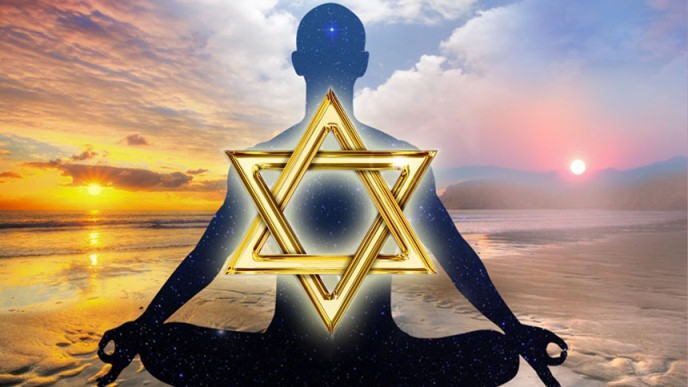The use of the hexagram in religion

The hexagram is a simple geometric shape that has taken on various meanings in a number of religions and belief systems. The opposing and overlapping triangles used to create it often represent two forces that are both opposite and interconnected.
The hexagram
The hexagram has a unique shape in geometry. To get equidistant points - those that are at equal distances from each other - it cannot be drawn unicursal. That is, it is not possible to draw it without lifting and repositioning the pen. Instead, two individual, overlapping triangles form the hexagram.
A unicursal hexagram is possible. You can create a six-pointed shape without lifting the pen and, as we will see, this has been adopted by some occult practitioners.
David's star
The most common representation of the hexagram is the Star of David, also known as Magen David. This is the symbol on the flag of Israel, which Jews have commonly used as a symbol of their faith for the past two centuries. This is also the symbol that multiple European communities have historically forced Jews to wear as identification, particularly from Nazi Germany in the 20th century.
The evolution of the Star of David is unclear. In the Middle Ages, the hexagram was often referred to as the Seal of Solomon, referring to a Biblical king of Israel and son of King David.
The hexagram also had a kabbalistic and occult significance. In the nineteenth century, the Zionist movement adopted the symbol. Due to these multiple associations, some Jews, especially some Orthodox Jews, do not use the Star of David as a symbol of faith.
Solomon's seal
Solomon's seal originates in the medieval stories of a magic seal ring possessed by King Solomon. In these, it is said to have the power to bind and control supernatural creatures. Often, the seal is described as a hexagram, but some sources describe it as a pentagram.
Duality of the two triangles
In Eastern, Kabbalistic, and Occult circles, the meaning of the hexagram is commonly closely related to the fact that it is made up of two triangles pointing in opposite directions. This concerns the union of opposites, such as male and female. It also commonly refers to the union of the spiritual and the physical, with the spiritual reality going down and the physical reality extending upward.
This intertwining of worlds can also be seen as a representation of the Hermetic principle "As above, so below". It refers to how changes in one world reflect changes in the other.
Finally, triangles are commonly used in alchemy to designate the four different elements. The more rarefied elements - fire and air - have downward triangles, while the more physical elements - earth and water - have upward triangles.
Modern and ancient occult thought
The triangle is such a central symbol in Christian iconography as it represents the Trinity and therefore spiritual reality. For this reason, the use of the hexagram in Christian occult thought is quite common.
In the 17th century, Robert Fludd produced an illustration of the world. In it, God was a vertical triangle and the physical world was his reflection and therefore facing downwards. The triangles overlap only slightly, thus not creating a hexagram of equidistant points, but the structure is still there.
Similarly, in the XNUMXth century Eliphas Levi produced his Great Symbol of Solomon, “Solomon's double triangle, represented by the two ancients of the Kabbalah; Macroprosopus and Microprosopus; the God of Light and the God of Reflections; of mercy and vengeance; the white Jehovah and the black Jehovah “.
“Hexagram” in non-geometric contexts
The Chinese I-Ching (Yi Jing) is based on 64 different arrangements of broken and unbroken lines, with each arrangement having six lines. Each chord is referred to as a hexagram.
Unicursal hexagram
The unicursal hexagram is a six-pointed star that can be drawn in one continuous motion. Its points are equidistant, but the lines are not the same length (unlike a standard hexagram). It can, however, fit into a circle with all six points touching the circle.
The meaning of the unicursal hexagram is largely identical to that of a standard hexagram: the union of opposites. The unicursal hexagram, however, more strongly emphasizes the intertwined and ultimate union of the two halves, rather than two separate halves coming together.
Occult practices often involve tracing symbols during a ritual, and a unicursal design lends itself better to this practice.
The unicursal hexagram is commonly depicted with a five-petaled flower in the center. This is a variant created by Aleister Crowley and is strongly associated with the religion of Thelema. Another variation is the placement of a small staff in the center of the hexagram.